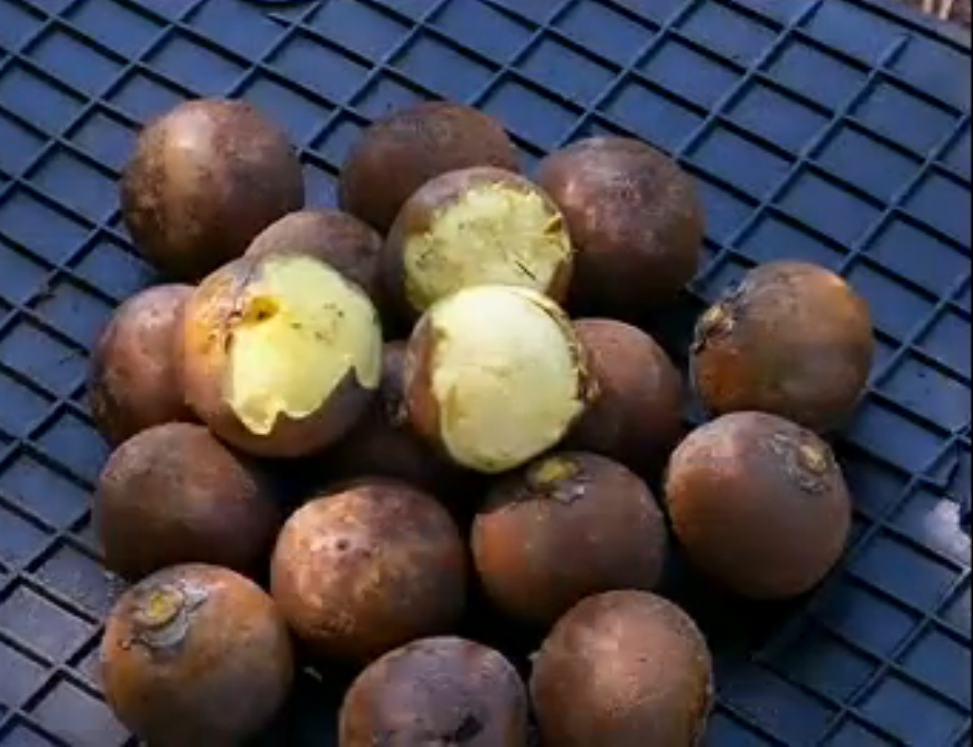Annual deforestation in the Amazon falls 11.3%, but remains high
quinta-feira, dezembro 01, 2022
The annual deforestation rate of the Legal Amazon fell for the first time since 2017, despite continuing to rise. With a decline of 11.3%, the forest area felled in the 12 months stood at 11,568 km², a value still above the average of the last decade and second worst mark of the Bolsonaro government. The devastated area is almost ten times that of the municipality of Rio de Janeiro.
The data calculated by Inpe's Prodes system caused some surprise in scientists studying the subject. The Deter system, also from Inpe (which monitors deforestation in real time but has lower sensitivity), pointed to an uptrend.
The rate announced now refers to the period from August 2021 to July 2022. The interval that runs from the middle of a year to the middle of the following year is the reference year that Inpe uses to estimate annual deforestation. The data that Prodes now shows does not yet include the intensification of the desmate that Deter showed in the second half of this year.
The states that most pulled the index drop between the reference years of 2020/21 and 2021/22 were Pará and Mato Grosso, traditionally those that deforest the most, with falls of 20.9% and 13.9%, respectively.
The Amazon was the only state where deforestation rose from one period to the next, with an increase of 13%.
The southeast of Amazonas, in the region of Lábrea (AM), is one of the most concerned environmental authorities. The region, where the Transamazonhighway ends, houses a lot of shallow forest cutting and burning within areas classified as unintended public forests, a strong indication that there is a lot of land there.
The rate measured by the Prodes system is more sensitive and accurate than that measured by the Deter system because it has a larger number of satellite images, obtained at different times. The presence of clouds over the region affects real-time measurement more than the annual measurement of deforestation, which is more accurate.
Prodes mapping is based on images from NASA's Landsat-8 and Landsat-9 satellites, and complementary images from sentinel-2 of the European Space Agency. Deforested areas larger than 6.25 hectares, approximately the size of seven football fields, are recorded and quantified. 108 sets of images were used to create the estimate, and there are another 121 to be used to improve the accuracy of the measurement.
In 2022, Inpe made it more accurate to differentiate deforestation subtypes that occur in the region. Prodes now differentiates, for example, deforestation occurred by shallow cutting or mining from that which occurs by "progressia degradation". These are areas already partially exploited for wood or stretches of forest that are on the edge of areas deforested by shallow cutting, more vulnerable to disturbances.
"It is important to highlight that there was no change in the methodology for detecting deforestation by Prodes, these deforestations were always computed, they were not presented in separate subclasses," says the inpe technical note.
"Inpe reinforces that the values presented in this note are an estimate of the deforestation rate for PRODES 2022", completes the document "The consolidated rate will be presented in the first half of 2023, when the processing of all 229 scenes covering the Brazilian Legal Amazon is completed."
The Ministry of the Environment said that the holder of the folder, Joaquim Leite, should not rule today on the numbers. GLOBO contacted the Ministry of Justice, which coordinates the Operation Guardians of the Biome, an initiative of the federal government to combat deforestation, burning and invasions. The other folder also did not pronounce until the early afternoon.
Negative legacy
The disclosure of deforestation figures provoked an immediate reaction from environmentalists. The Climate Observatory, the largest coalition of NGOs in the sector, says that despite the reduction between one year and another, the deforestation rate remains at high levels and consolidates a bad result for the current management of the federal government.
"The government of Jair Bolsonaro ends with an increase of 59.5% in the rate of deforestation in the Amazon compared to the previous four years (Dilma and Temer governments). It is the highest percentage in a presidential term since satellite measurements began in 1988," the group said in a statement.
In the NGO's accounts, the Bolsonaro government ends up with a legacy of annual devastation above 11,000 km² on average. The Dilma/Temer period ranged from 5,500 to 7,200 on average. In Lula's first term, the average annual deforestation was higher, from 21,600, but in the second fell to 9,800.
There is no clear explanation for the 11.3% reduction in desmate from one year to another, experts say. They, however, acknowledge that in 2022 there was a small improvement in actions to combat the problem.
— Part of this reduction can be explained by the increase in control actions of state environmental agencies, especially in Pará, but part of this can also be explained by the increase in rainfall in Mato Grosso and Pará," says forest engineer Tasso Azevedo, technical coordinator of the Climate Observatory and head of MabBiomas, an independent project that maps territorial occupation in Brazil.
According to the scientist, the discourse that the policy against deforestation punishes farmers who are within the law does not find support in facts.
— The MapBiomas consortium found evidence of illegality in 98% of deforestation in 2021, and control bodies only acted in 27% of the deforested area. Impunity still predominates and needs to be faced with determination in the new government, azevedo says.
The Coalition Brazil Climate, Forests and Agriculture, a group that brings together scientists, NGOs and agribusiness companies, also spoke out, stating that despite the fall in desmate, the high number indicates that the government "has been careless with the preservation of biomes".
— Now, attention should be not only on the actions that will be taken by the new government, but also to the key role that will be played by Congress. Measures to reduce deforestation and the formulation of a forest-based economy are essentially through the Legislature, said Marcelo Furtado, one of the coalition coordinators.
Source: Um só Planeta






















0 comentários
Agradecemos seu comentário! Volte sempre :)